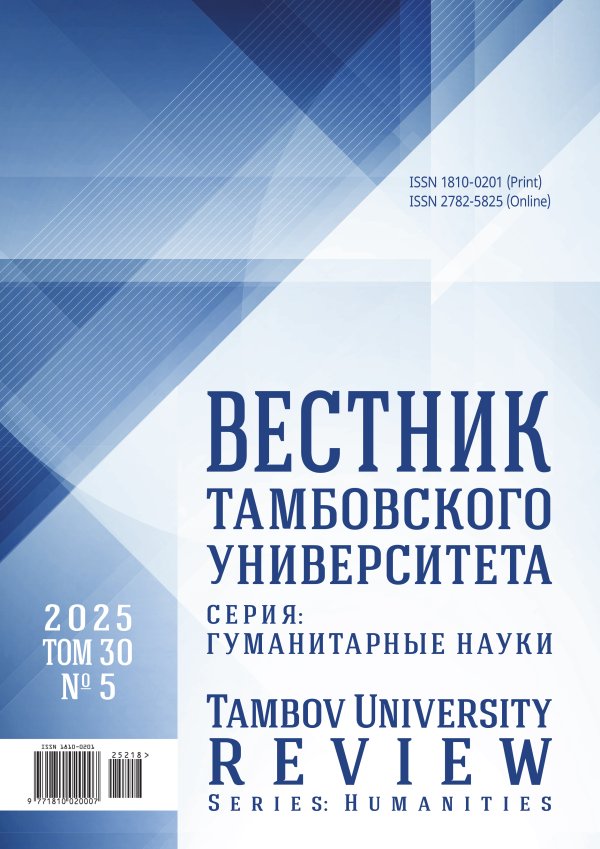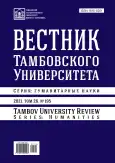Использование технологии смешанного обучения «перевернутый класс» при обучении иностранному языку в вузе
- Авторы: Ульянов С.С.1
-
Учреждения:
- ФГБОУ ВО «Мичуринский государственный аграрный университет»
- Выпуск: Том 26, № 195 (2021)
- Страницы: 87-94
- Раздел: ТЕОРИЯ И МЕТОДИКА ОБУЧЕНИЯ ИНОСТРАННОМУ ЯЗЫКУ В ВЫСШЕЙ ШКОЛЕ
- URL: https://ogarev-online.ru/1810-0201/article/view/298511
- DOI: https://doi.org/10.20310/1810-0201-2021-26-195-87-94
- ID: 298511
Цитировать
Полный текст
Аннотация
Обоснована необходимость использования современной образовательной технологии смешанного обучения «перевернутый класс» в вузовском образовании, внедрения новых принципов построения образовательного процесса в высшей школе, поиска новых организационных форм обучения, интерактивных методов и технологий обучения иностранному языку. Решение исследовательской задачи основано на теоретических, методологических и практических вопросах, которые рассмотрены в исследовании. Акцентировано внимание на том, что обучение иностранному языку основано на методическом потенциале компетентностного и личностно-ориентированного подходов. Отмечена роль преподавателя иностранного языка, который является фасилитатором, консультантом и обеспечивает успешную коммуникацию обучающихся в процессе выполнения междисциплинарных или метадисциплинарных исследовательских проектов, которые способствуют формированию метадисциплинарных и коммуникативных навыков. Полученные результаты педагогического эксперимента позволяют предположить, что использование технологии смешанного обучения «перевернутый класс» повысило уровень внутренней мотивации студентов к изучению иностранного языка. Эта технология позволяет индивидуализировать и активизировать учебный процесс.
Об авторах
С. С. Ульянов
ФГБОУ ВО «Мичуринский государственный аграрный университет»
Автор, ответственный за переписку.
Email: aaa.ulyanov@yandex.ru
ORCID iD: 0000-0002-2950-1736
ассистент кафедры иностранных языков и методики их преподавания
393760, Российская Федерация, Тамбовская обл., г. Мичуринск, ул. Интернациональная, 101Список литературы
- Bergmann J., Sams A. Flipped learning: gateway to student engagement. Moorabbin: Hawker Brownlow, 2015. 169 p.
- Bishop J.L., Verleger M.A. The flipped classroom: A survey of the research // ASEE National Conference Proceedings. Atlanta, 2013. Vol. 30. № 9. P. 1-18.
- Filiz S., Benzet A. A content analysis of the studies on the use of flipped classrooms in foreign language education // World Journal of Education. 2018. Vol. 8. № 4. Р. 72-86. https://doi.org/10.5430/wje.v8n4p72
- Dumont A., Berthiaume D. La pédagogie inversée. Enseigner autrement dans le supérieur avec la classe inversée. Louvain-la-Neuve, De Boeck Supérieur Publ., 2016. 240 p.
- Еловская С.В., Черняева Т.Н. Интерактивное обучение в высшем образовании // Известия Саратовского университета. Новая серия. Серия: Акмеология образования. Психология развития. 2019. Т. 8. № 1. С. 83-87.
- Зимняя И.А., Шашенкова Е.А. Исследовательская работа как специфический вид человеческой деятельности. Ижевск: Удмурт. гос. ун-т; Москва, 2001. 103 с.
- Юрина М.В., Лопухова Ю.В. Применение инновационной технологии «Перевернутый класс» при обучении иностранному языку в техническом вузе // Самарский научный вестник. 2017. Т. 6. № 4 (21). С. 262-266.
- Цытович М.В., Бороненко Г.Ф., Якушева О.В. Использование технологии перевернутого класса на разных ступенях высшего образования // Вестник Южно-Уральского государственного университета. Серия «Образование. Педагогические науки». 2019. Т. 11. № 3. С. 21-32.
- Еловская С.В. Использование интерактивных образовательных технологий при обучении иностранному языку в вузе // Вестник Тамбовского университета. Серия: Гуманитарные науки. Тамбов, 2018. Т. 23. № 176. С. 39-45. https://doi.org/10.20310/1810-0201-2018-23-176-39-45
- Подстрахова А.В. Преподавание иностранных языков в нефилологическом вузе: возможности и ограничения в применении мобильных технологий // Глобальный научный потенциал. 2020. № 3 (108). С. 41-43.
- Khvilon E., Patru M. Information and Communication Technologies in Teacher Education: a Planning Guide. P.: Division of Higher Education, UNESCO, 2002. 237 p.
Дополнительные файлы










